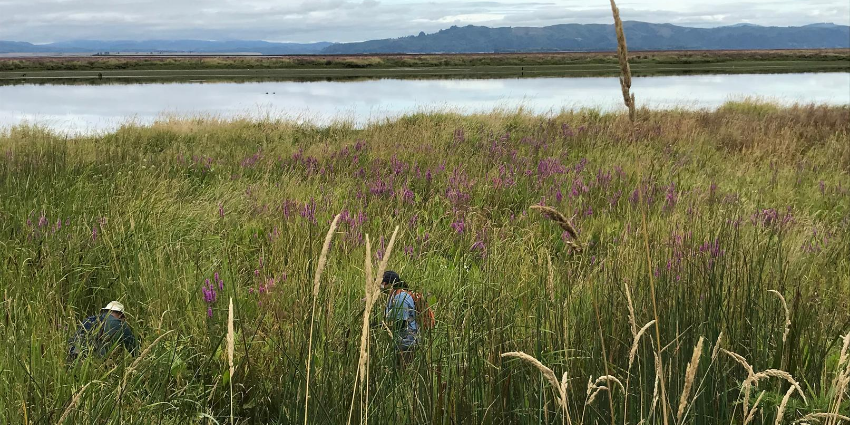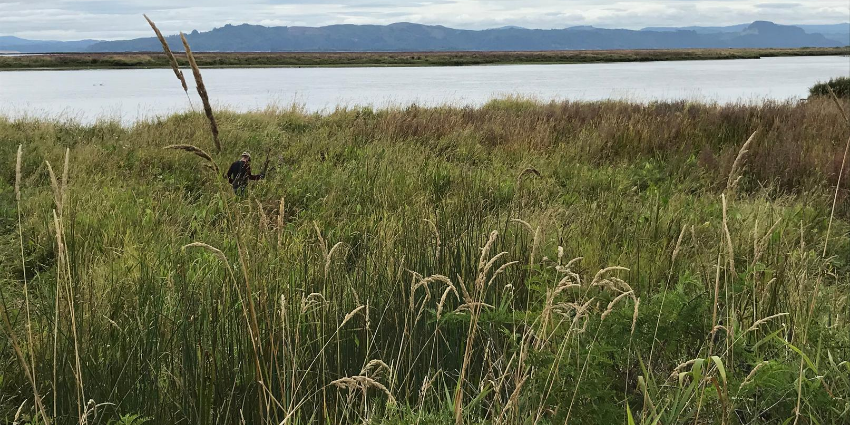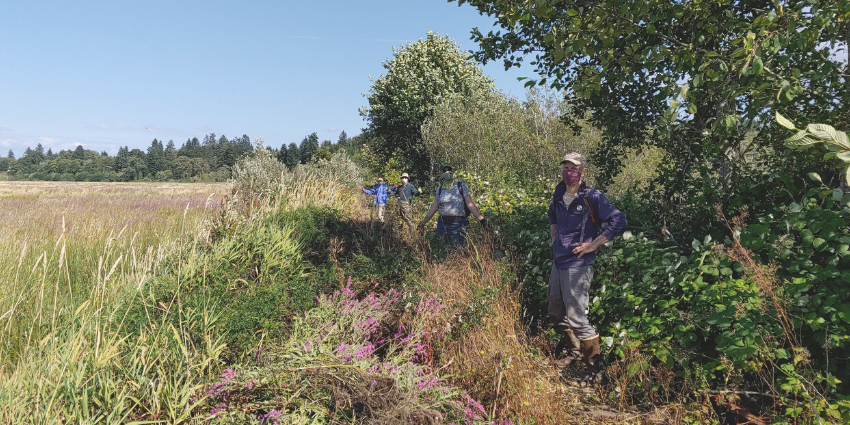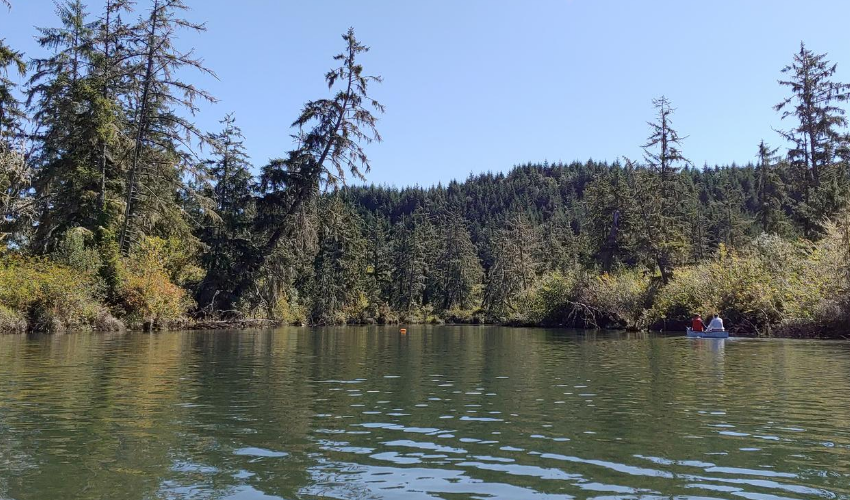
Now you see it …
Every August NCLC stewardship staff and volunteers spend one day a week—or more—pulling a weed called purple loosestrife out of the mud at Wolf Bay Habitat Reserve, one of our conserved properties on the lower Columbia River. August is also when we typically hold our Swampathon: a full weekend of stewardship work at Blind Slough Swamp and other nearby habitat reserves, much of it by canoe, much of it aimed at loosestrife.
2020 was no different—but it was completely different.
There was no Swampathon. But volunteers still managed to pull huge heaps of loosestrife out of the marsh during weekly work parties. We weren’t able to open these stewardship days to all comers. Rather, our loosestrife pulls were conducted by staff and a small group of what we are calling Seasoned Stewards: people who have done this before, who understand how it’s done, and who are familiar with our COVID-19 safety protocols.

… now you don’t.
Loosestrife can grow 6 feet tall or taller. It’s not an easy plant to pull—often it takes a shovel and some serious leverage—but they’re easier than some invasive plants to uproot (yellow flag iris, anyone?). We pull loosestrife in August when its magenta blooms make it easy to spot but before its tiny seeds ripen. Despite our annual eradication efforts, seeds float in from neighboring lands and sprout in the spring, which is why loosestrife-pulls are something of an annual maintenance chore on these lands.
Why bother? Loosestrife tends to take over marshes, choking out native species and eliminating food, nesting, and shelter resources for wildlife. No fish, bird, or mammal depends on loosestrife here. It germinates faster than many native plants and can quickly take over a marsh. Clumps of loosestrife change the workings and character of the marsh, slowing drainage and accumulating sediment. In Europe and Asia, where it is native, loosestrife is controlled by climate and by natural pests such as beetles and weevils. On the Oregon Coast, stewardship volunteers are its pests.

Masked-up volunteers pause from pulling loosestrife.
“In a way, we’re just doing maintenance,” says Land Steward Eric Owen. Other than the loosestrife, the Wolf Bay marsh “is a really healthy, diverse plant community.
“We’ve been able to get a lot done,” Eric adds. “We’re still playing catch-up from those three months when we were kind of locked down and not doing much field work. The last three it’s been great to have the help again and to work with our volunteers again.”
Thank you to Seasoned Steward Eric Halperin for the above photos.

A small crew took to the water one day in late August to pluck some loosestrife from Blind Slough Swamp.
Comments